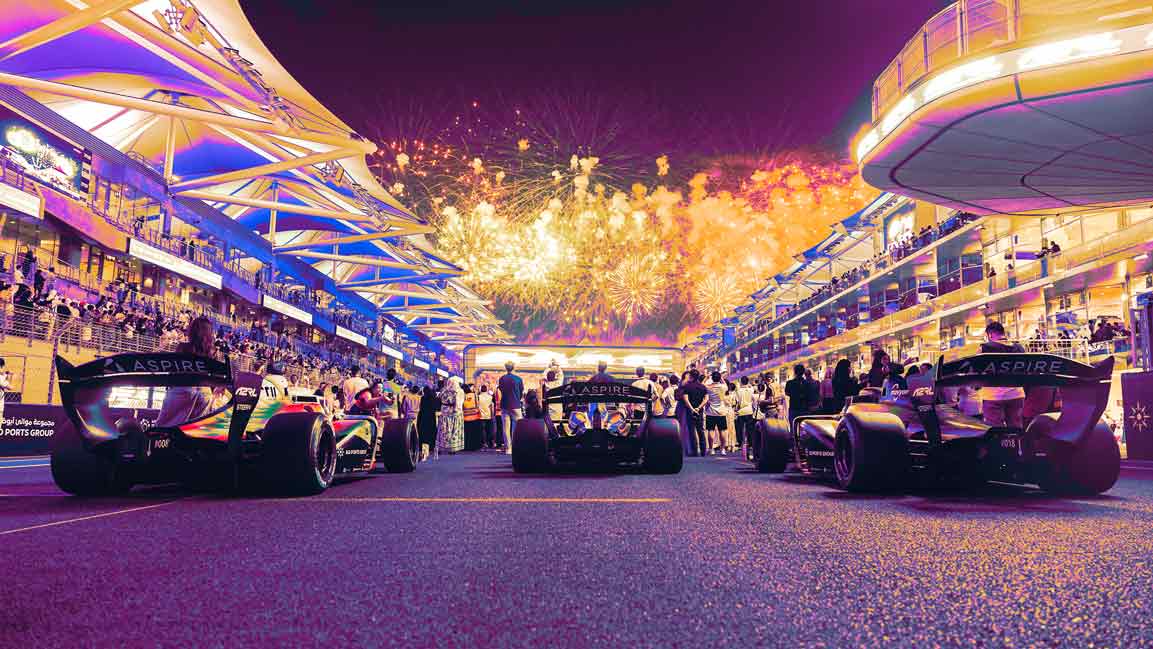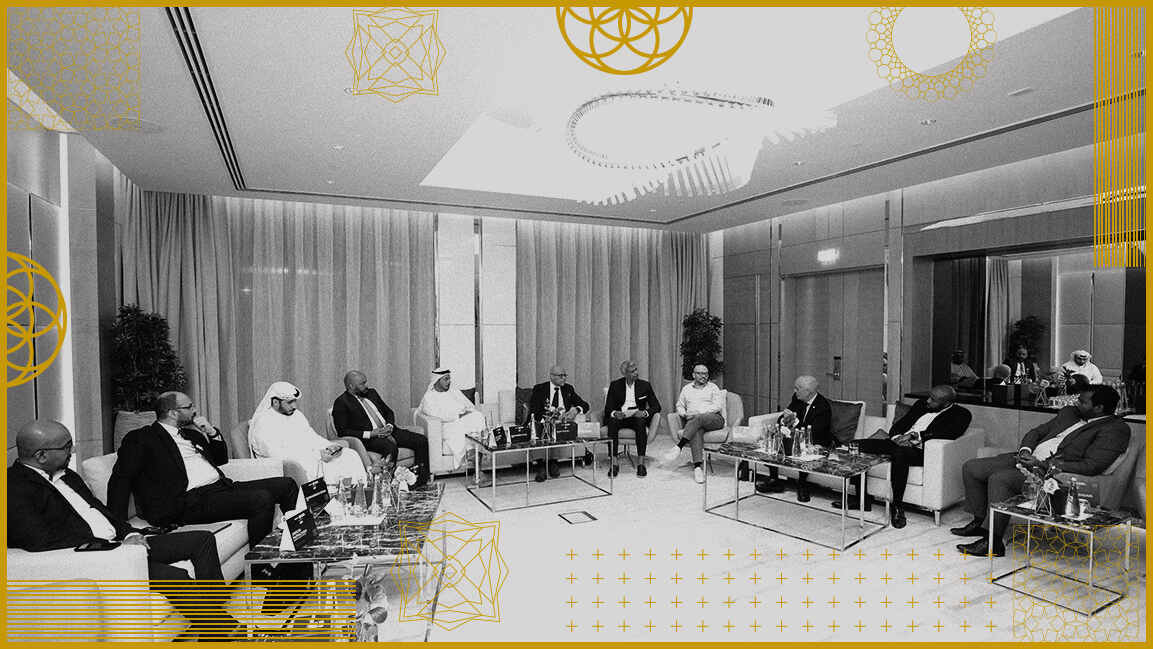- | Visa
Journeys Unpacked: RAKTDA & Visa – Elevating Ras Al Khaimah into a global destination
The latest episode of Journeys Unpacked, powered by Visa, explores how Ras Al Khaimah is transforming into a world-class destination by blending natural beauty, cultural heritage, and bold innovation to drive tourism and enhance livability.

Ras Al Khaimah (RAK) has a unique appeal. Positioning itself as a premier global tourism hub, blending nature, adventure, and cultural heritage, the emirate aims to attract 3.5 million visitors annually by 2030.
Central to this vision is developing the $5.1 billion Wynn Al Marjan Island resort—set to open in 2027—the UAE’s first integrated resort with licensed gaming. It will offer over 1,500 rooms, high-end dining, entertainment, and around 7,000 jobs. The emirate plans to more than double its hotel capacity to over 15,000 rooms by the end of the decade, with new luxury brands and branded residences.
In an episode of Journeys Unpacked, Dr. Saeeda Jaffar, Senior Vice President & Group Country Manager—GCC at Visa, sits down with Raki Phillips, CEO of Ras Al Khaimah Tourism Development Authority (RAKTDA), to explore RAK’s extraordinary growth and future ambitions.
WATCH THE VIDEO HERE
“Ras Al Khaimah has been such an incredible journey and story,” Dr. Jaffar says. “From driving record numbers of tourists into the emirate to being named one of the best places to live.”
“It’s easy when you have an emirate as beautiful as what we have in RAK,” says Phillips. “You’re blessed with incredible topography—the highest mountain in the UAE, Jebel Jais, 68 kilometers of white-sand beach, and the desert. Having those three topographies together just makes it easy.”
Topography is just one part of the emirate’s beauty. Phillips states that RAK’s entrepreneurial history has laid a strong foundation for diversification.
“Historically, RAK was an entrepreneurial emirate, RAK Ceramics, the third largest ceramics manufacturer in the world, our rock quarries with Stevin Rock, and Julphar Pharmaceuticals. We focused on tourism over a decade ago, and it has done so well for the emirate.”
That strategic pivot to tourism was no accident—it’s closely tied to the emirate’s livability goals.“Tourism is the greatest driver of livability, and that’s why, as an emirate, we focused on it,” says Phillips.
With 1.28 million overnight visitors in recent years, RAK now targets an even more ambitious target.“We will triple the number of tourists,” says Phillips. “By the end of the decade, I want to get to 3.5 million overnight guests and about 1.5 million day visitors.”
Pointing out that RAK already has a stronghold in domestic and international markets, Phillips says, “We do a great job from the UK to India. China is now in our top 10. Our focus now is on how to get a GCC customer to come on board and expand into other markets. I think we are the most popular place in the UAE.”
The emirate’s popularity is backed by a diversified tourism offering anchored in RAK’s rich landscape and heritage.“From the coastlines to the mountains, it’s just a gorgeous place,” Dr. Jaffar says.
Adventure tourism plays a huge role here. “If you take our most natural, beautiful asset, Jebel Jais, you’ve got the world’s longest zipline—the Jebel Jais Flight,” Phillips adds.
It comprises 94 kilometers of hiking trails across the Hajar Mountains, caves, waterfalls, and the Bear Grylls Explorers Camp for a gritty experience. In addition, Camp 1770 is for those seeking stargazing and serenity. The topography is varied, and it goes beyond mountains. The emirate boasts luxury and eco-friendly developments across all terrains—from overwater villas at Anantara to the desert sanctuary of Ritz-Carlton Al Wadi.
“You can see wildlife from your pool,” Phillips adds. “All of that makes it quite a unique destination.”
TACKLING OVER TOURISM CONCERNS
Rapid growth demands sustainable planning. To manage growth responsibly, RAKTDA partnered with Gensler to design a comprehensive master plan. “25 to 30% of what we’re developing is green space,” Phillips says. “Gensler told us what we’re building is the size of South Beach on a white canvas.”
Authenticity remains a central theme to the emirate’s development. “The goal is to make it one of the most livable cities in the world,” Phillips says.
Dr. Jaffar notes that RAK is already ranked among the most livable cities due to several factors: connectivity, natural surroundings, community, and quality of life.
“If you live in or visit RAK, you feel nature all around you,” Phillips says. “From our beautiful resorts to the top of Jebel Jais, it’s a 45-minute drive—and a beautiful one.”
History, too, plays a key role in shaping the emirate’s identity. “RAK has 7,000 years of history,” Phillips says. “We’ve identified 80 historical sites, and we’re focused on about 20 to make them tourism-ready.”
Among those is the restored pearling village of Al Jazeera Al Hamra. It used to be known as the ghost city, but now the RAK Arts Festival brings the area to life.
Remarking on the balance between ancient and modern, Dr. Jaffar says, “A lot of times, we don’t realize that when everything looks so new and modern, we are actually built on 7,000 years of history.”
ENHANCING VISITOR EXPERIENCE
Beyond tourism and heritage, modern infrastructure, such as seamless payment systems, enhances the visitor experience.
“Payment is necessary because to enjoy a vacation and build memories, there has to come an element of it,” Phillips says.“We track consumer spend and use that data to curate offerings.”
Phillips cites an example of cross-border innovation. “We signed an agreement with the Government of Musandam to have people stay in RAK and cross the border to Oman for a day. Through our “See Double” campaign, guests can book a package and experience seamless travel into Musandam with all pre-checking done at the hotel.”
It doesn’t stop there. RAK is welcoming some of the biggest names in global hospitality. “We have 7,500 hotel keys currently under development. The W Hotel, Nobu, Four Seasons, Fairmont, and our biggest project is the $5 billion foreign direct investment in the Wynn Integrated Resort,” Phillips says.
It’s a 1,500-key resort with over 22 F&B outlets and a major entertainment complex. “And it’s only 10% of our future inventory,” he adds.
He adds that since people want to vacation and experience the destination, RAK focuses on diversity, from luxury beachfront hotels to mountain lodges and glamping sites. “All of those are wonderful experiences that will add tremendous value.”
Reflecting on RAK’s dynamic evolution, Dr. Jaffar says the emirate is “constantly trying to do things differently, shake things up, and bring unique experiences.”
“It’s in our DNA,” Phillips concludes. “We’re an entrepreneurial emirate—that’s how we move fast.”
Journeys Unpacked is a series produced by Fast Company Middle East, in collaboration with digital payments leader Visa, to explore how technology, innovation, and digital payments are reshaping travel, hospitality, and digital commerce industries.








































